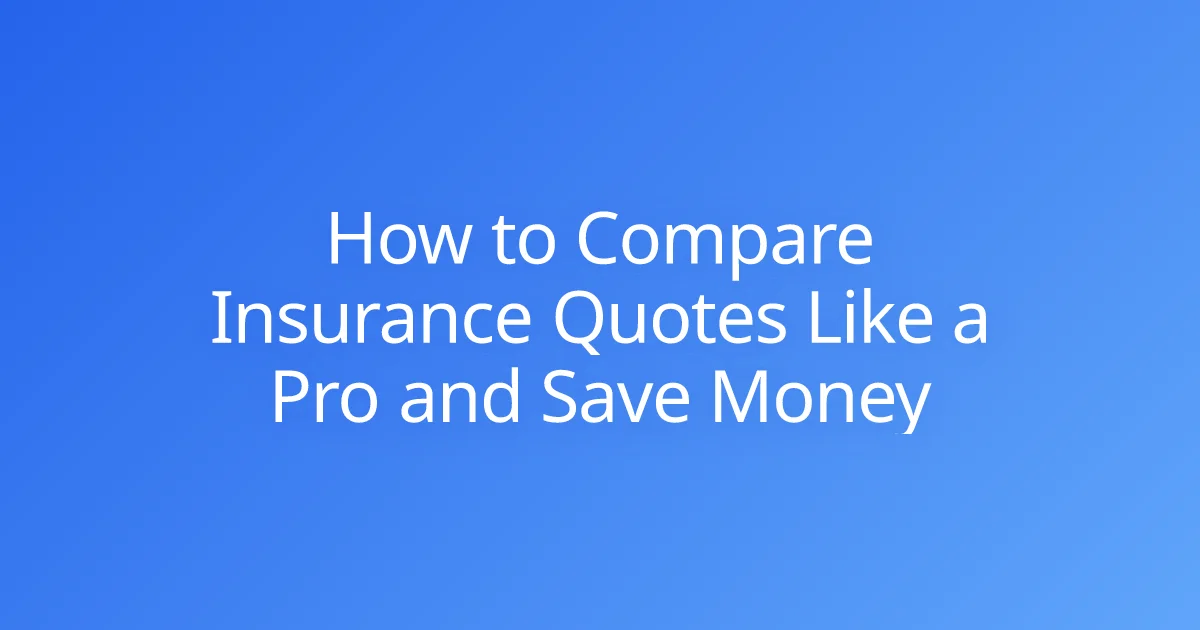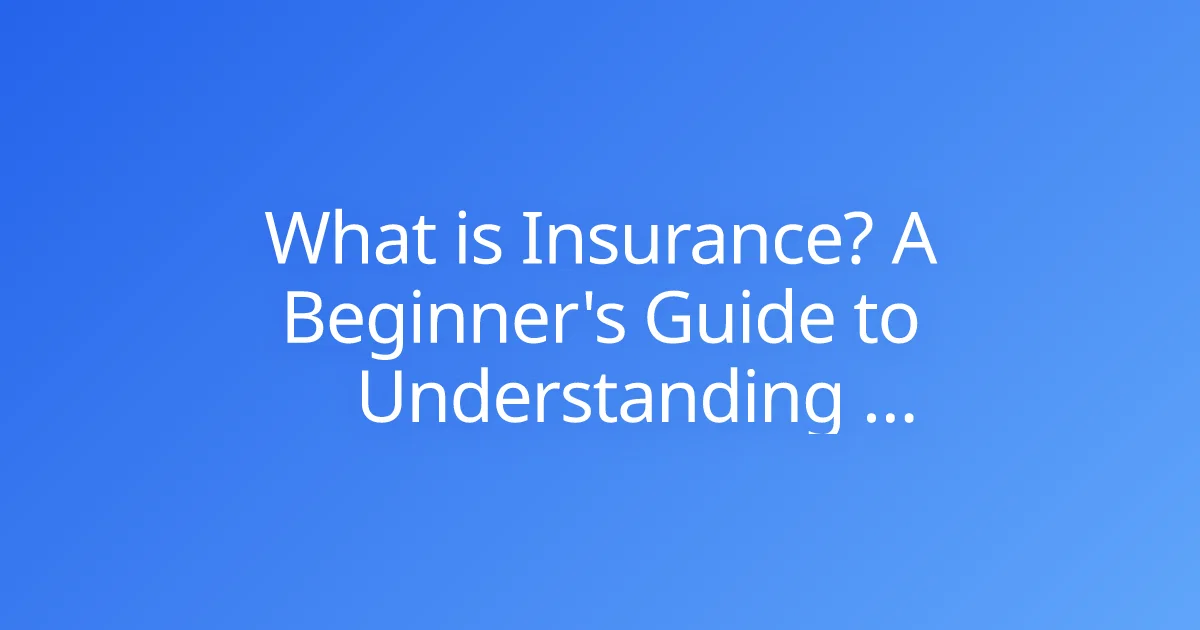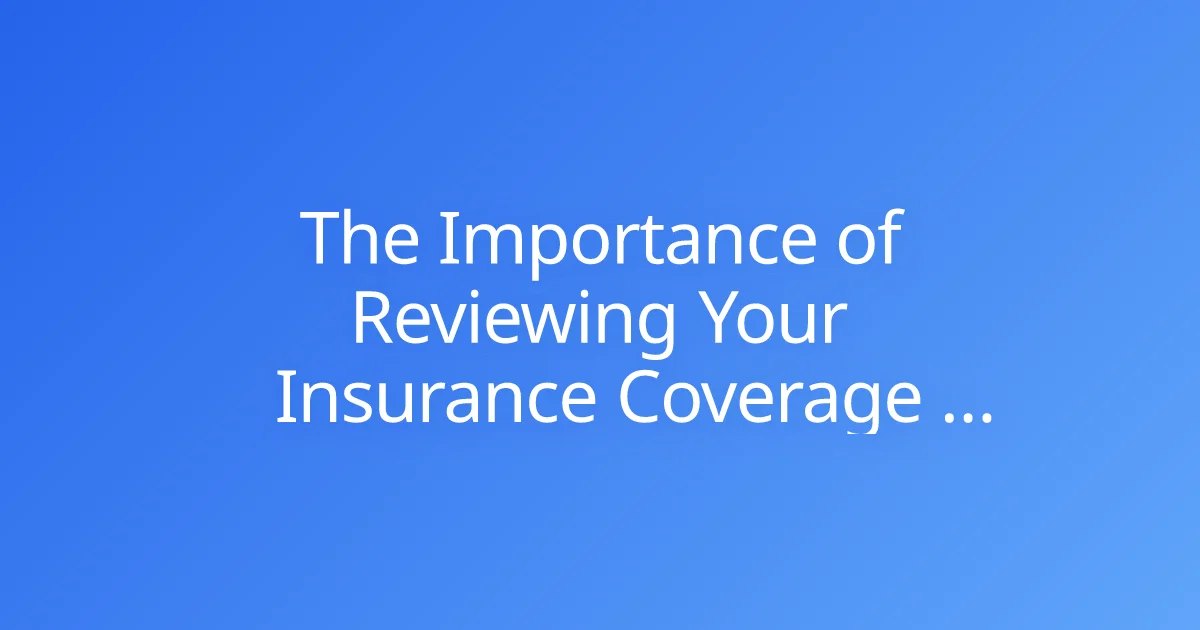How to Compare Insurance Quotes Like a Pro and Save Money
Are you currently paying for insurance and wondering if you're getting the best deal? Or perhaps you're in the market for a new policy and feeling overwhelmed by the sheer volume of options and varying price points? The process of gathering and attempting to compare insurance quotes can feel like a complex puzzle, leading many to simply choose the first or cheapest option, often without fully understanding what they're truly getting. This approach can cost you hundreds, even thousands, of dollars over time, or worse, leave you significantly underinsured.
At The Policy Explainer, we believe that securing optimal insurance coverage at a fair price should be straightforward. This comprehensive guide will equip you with the expert strategies needed to compare insurance quotes like a pro and save money. We’ll walk you through the essential steps, highlight crucial factors beyond just the premium, and empower you to confidently identify the best value that protects your assets and your peace of mind.
Why Smart Insurance Comparison is Your Financial Superpower
Comparing insurance quotes isn't just about finding the lowest price; it's about finding the right coverage at the right price. It's a proactive step that can significantly impact your financial well-being.
Unlock Significant Savings
Insurance premiums can vary dramatically between providers for the exact same level of coverage. Companies use different algorithms to assess risk, offer varying discounts, and have different overheads. By actively comparing insurance quotes, you can uncover these discrepancies and potentially save hundreds or even thousands of dollars annually on your premiums. This isn't just a one-time saving; it compounds year after year.
Ensure Adequate Coverage
A low premium might seem attractive, but it means nothing if the coverage is insufficient when you need it most. A professional comparison goes beyond price to ensure you're getting the appropriate insurance coverage that truly protects your assets and financial future. You'll identify if you're underinsured or, conversely, if you're paying for coverage you don't actually need.
Discover Better Customer Service
Beyond cost and coverage, the quality of an insurer's customer service and claims handling is paramount. A company with a strong reputation for efficient and empathetic service can make a world of difference during a stressful claim situation. Comparing goes beyond the numbers to include the overall experience and reliability of the provider.
Before You Start: Gather Your Information for Accurate Quotes
To compare insurance quotes effectively, consistency is key. You need to provide the same information to every insurer to ensure you're getting "apples-to-apples" comparisons. Here's a checklist of what you'll typically need:
Personal & Household Information
- Full Legal Name and Date of Birth: For all drivers or adult household members.
- Address: Your primary residence.
- Social Security Number: Often requested for credit checks (which influence rates).
- Driver's License Number (for auto insurance): For all drivers on the policy.
- Occupation and Education Level: Some insurers offer discounts based on these.
- Marital Status: Can affect rates, especially for auto insurance.
- Previous Insurance History: Dates of prior coverage, current insurer, policy number, and reason for leaving (if applicable).
Details of the Insured Item(s)
- For Auto Insurance:
- Vehicle Year, Make, Model, VIN (Vehicle Identification Number)
- Current Odometer Reading
- Safety Features (e.g., anti-lock brakes, airbags, alarm systems)
- Usage (e.g., commute distance, personal vs. business use)
- Any modifications or aftermarket parts.
- For Homeowners Insurance:
- Property Address and Year Built
- Square Footage and Construction Type (e.g., brick, wood frame)
- Roof Type and Age
- Number of Stories
- Safety Features (e.g., smoke detectors, alarm systems)
- Proximity to Fire Hydrants/Fire Departments
- Any prior claims history on the property.
- For Health Insurance:
- Current health status, existing conditions (though these typically don't affect rates for individual marketplace plans due to ACA).
- Prescription drug list.
- Preferred doctors/hospitals (for network considerations).
Current Policy Information (If You Have One)
Having your current policy's declarations page handy is invaluable. This allows you to replicate your current coverage limits, deductibles, and endorsements precisely when getting new quotes, ensuring a true comparison.
Beyond Price: What to Compare in Insurance Quotes
While the premium is important, it's only one piece of the puzzle. A true professional insurance comparison looks at the entire value proposition.
1. Coverage Limits and Types
- Don't just compare premiums; compare coverage. Ensure each quote offers the same liability limits, property damage coverage, and any specific coverages you need (e.g., personal injury protection, comprehensive, collision for auto; dwelling, personal property, liability for home).
- "Apples-to-Apples" Rule: This is paramount. If one quote is significantly cheaper, scrutinize its coverage. It likely offers lower limits or fewer types of coverage.
2. Deductibles
- A deductible is your out-of-pocket cost before insurance pays. A higher deductible typically means a lower premium, and vice-versa.
- Compare deductibles across quotes. Are they the same? If one quote has a lower premium due to a much higher deductible, factor in your ability to pay that amount if a claim occurs.
3. Exclusions and Endorsements (Riders)
- Exclusions: What specific events or damages are not covered? These can vary by insurer and policy.
- Endorsements/Riders: Are there specific additions or modifications that might be included in one quote but not another? For instance, roadside assistance, rental car reimbursement, or guaranteed replacement cost for your home. These can add significant value or protection.
4. Available Discounts
- Inquire about all potential insurance discounts. These can include:
- Bundling Discounts: For combining multiple policies (e.g., auto + home).
- Multi-Vehicle Discounts: For insuring more than one car.
- Safety Feature Discounts: For alarms, anti-lock brakes, smoke detectors.
- Good Driver/Student Discounts: For safe records.
- Payment Method Discounts: For paying annually or setting up automatic payments.
- Loyalty Discounts: For long-term customers.
5. Insurer Reputation and Customer Service
- Financial Strength: Check ratings from independent agencies (e.g., A.M. Best, Moody's, S&P) to ensure the company's ability to pay claims.
- Customer Satisfaction: Look at online reviews, consumer complaint ratios (e.g., from state insurance departments), and third-party ratings (e.g., J.D. Power). A cheaper premium isn't worth it if claims are difficult or service is poor.
- Local Agent vs. Online Provider: Consider whether you prefer the personalized service of a local agent or the convenience of an online-only provider.
The Comparison Process: Step-by-Step
Now, let's put it all into practice with a structured approach.
Step 1: Get Multiple Quotes
Don't settle for just one or two. Aim for at least 3-5 quotes from a mix of large national insurers, smaller regional providers, and independent agents (who can often get quotes from multiple companies for you).
Step 2: Standardize Your Quotes
Once you have your quotes, immediately check the declarations page (or summary) of each. Verify that the following are identical across all quotes:
- Coverage Types and Limits: Ensure they match your desired level of protection.
- Deductibles: Confirm they are the same dollar amount.
- Named Insureds/Drivers: All relevant individuals should be listed.
If they don't match, ask the insurer to adjust the quote to match your desired coverage. This is the only way to perform a true "apples-to-apples" comparison.
Step 3: Analyze the Details
- Look Beyond the Premium: Compare the overall value, considering all the factors discussed above: coverage breadth, exclusions, available endorsements, and discounts.
- Read the Fine Print (or at least the summary): Pay attention to specific language around covered perils and conditions.
- Check Payment Options: Are there discounts for paying annually vs. monthly? Are there fees for certain payment types?
Step 4: Don't Be Afraid to Ask Questions
If any part of a quote is unclear, or if you see a significant price difference you can't explain, pick up the phone. A good agent or customer service representative should be able to clarify all your concerns. This is also an opportunity to gauge their customer service.
Common Mistakes to Avoid When Comparing Quotes
Steering clear of these common pitfalls will further enhance your ability to save money on insurance and secure the best policy.
- Focusing Solely on Price: The cheapest option is rarely the best option. Inadequate coverage can cost you far more in the long run than a slightly higher premium.
- Not Being Truthful or Omitting Information: Providing inaccurate information (e.g., mileage, claims history) might get you a lower quote initially, but it can lead to a denied claim or policy cancellation later. Always be honest.
- Ignoring Customer Service and Reviews: During a claim, the quality of your insurer's support is paramount. Don't sacrifice service for a few dollars in savings.
- Waiting Until the Last Minute: Give yourself ample time to compare quotes thoroughly. Rushing can lead to poor decisions or missing out on better deals. Start shopping a few weeks before your current policy renews.
- Assuming All Bundles are Best: While bundling often saves money, it's not always the case. Always get separate quotes for individual policies, then compare the bundled quote. Sometimes, two separate policies from different carriers can still be cheaper.
Conclusion
Mastering how to compare insurance quotes like a pro is a crucial skill for every financially savvy individual. By moving beyond just the premium and delving into the intricacies of coverage limits, deductibles, exclusions, and insurer reputation, you empower yourself to make informed decisions that genuinely protect your assets and save you money over the long term. This systematic approach ensures you secure not just the cheapest policy, but the best value tailored to your unique needs.
Taking the time to do this right is an investment in your financial security and peace of mind. Are there any specific aspects of comparing quotes that you find particularly challenging, or perhaps a unique situation you're trying to navigate?



